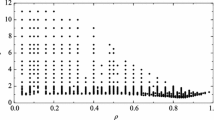A new technique is proposed here to represent the thermodynamic surface of a pure fluid in the fundamental Helmholtz energy form. The peculiarity of the present method is the extension of a generic equation of state for the target fluid, which is assumed as the basic equation, through the distortion of its independent variables by individual shape functions, which are represented by a neural network used as function approximator. The basic equation of state for the target fluid can have the simple functional form of a cubic equation, as, for instance, the Soave–Redlich–Kwong equation assumed in the present study. A set of nine fluids including hydrocarbons, haloalkane refrigerants, and strongly polar substances has been considered. For each of them the model has been regressed and then validated against volumetric and caloric properties generated in the vapor, liquid, and supercritical regions from highly accurate dedicated equations of state. In comparison with the underlying cubic equation of state, the prediction accuracy is improved by a factor between 10 and 100, depending on the property and on the region. It has been verified that about 100 density experimental points, together with from 10 to 20 coexistence data, are sufficient to guarantee high prediction accuracy for different thermodynamic properties. The method is a promising modeling technique for the heuristic development of multiparameter dedicated equations of state from experimental data.
Similar content being viewed by others
References
Schmidt R., Wagner W. (1985). Fluid Phase Equilib. 19:175
Setzmann U., Wagner W. (1989). Int. J. Thermophys. 10:1103
Span R. (2000) Multiparameter Equations of State. Springer Verlag, Berlin
Ely J.F. (1990). Adv. Cryog. Eng. 35:1511
Huber M., Ely J.F. (1994). Int. J. Refrig. 17:18
Estela-Uribe J.F., Trusler J.P.M. (1998). Fluid Phase Equilib. 150-151:225
Estela-Uribe J.F., Trusler J.P.M. (2001). Fluid Phase Equilib. 183-184:21
Estela-Uribe J.F., Trusler J.P.M. (2003). Fluid Phase Equilib. 204:15
Estela-Uribe J.F., Trusler J.P.M. (2004). Fluid Phase Equilib. 216:59
Scalabrin G., Piazza L., Cristofoli G. (2002). Int. J. Thermophys. 23:57
Piazza L., Scalabrin G., Marchi P., Richon D. (2006). Int. J. Refrig. 29:1182
Scalabrin G., Piazza L., Richon D. (2002). Fluid Phase Equilib. 199:33
Reed T.M., Gubbins K.E. (1973) Applied Statistical Mechanics. McGraw-Hill, New York
Rowlinson J.S., Swinton F.L. (1982) Liquids and Liquid Mixtures. Butterworths, London
Rowlinson J.S., Watson I.D. (1969). Chem. Eng. Sci. 24:1565
Leland T.W., Chappelear P.S. (1968). Ind. Eng. Chem. 60:15
Scalabrin G., Marchi P., Bettio L., Richon D. (2006). Int. J. Refrig. 29:1195
Redlich O., Kwong J.N.S. (1949). Chem. Rev. 44:233
Soave G. (1972). Chem. Eng. Sci. 27:1197
Mollerup J. (1980). Fluid Phase Equilib. 4:11
Reid R.C., Prausnitz J.M., Poling B.E. (1988) The Properties of Gases and Liquids. McGraw-Hill, New York
Peneloux A., Rauzy E., Freze R. (1982). Fluid Phase Equilib. 8:7
Friend D.G., Ingham H., Ely J.F. (1991). J. Phys. Chem. Ref. Data 20:275
Younglove B.A., Ely J.F. (1987). J. Phys. Chem. Ref. Data 16:577
Tillner-Roth R., Yokozeki A. (1997). J. Phys. Chem. Ref. Data 26:1273
Outcalt S.L., McLinden M.O. (1995). Int. J. Thermophys. 16:79
Tillner-Roth R., Baehr H. D. (1994). J. Phys. Chem. Ref. Data 23:657
Outcalt S.L., McLinden M.O. (1997). Int. J. Thermophys. 18:1445
R. Tillner-Roth, F. Harms-Watzenberg, and H. D. Baehr, Proc. 20th DKV-Tagungsbericht, Vol. II (Heidelberg, Germany, 1993), pp. 167-181.
Wagner W., Pruss A. (2002). J. Phys. Chem. Ref. Data 31:387
Rumelhart D.E., McClelland J.L. (1986) Parallel Distributed Processing: Exploration in the Microstructure of Cognition. MIT Press, Cambridge, MA
Author information
Authors and Affiliations
Corresponding author
Rights and permissions
About this article
Cite this article
Scalabrin, G., Bettio, L., Marchi, P. et al. An Extended Equation of State Modeling Method I. Pure Fluids. Int J Thermophys 27, 1281–1318 (2006). https://doi.org/10.1007/s10765-006-0111-9
Published:
Issue Date:
DOI: https://doi.org/10.1007/s10765-006-0111-9



